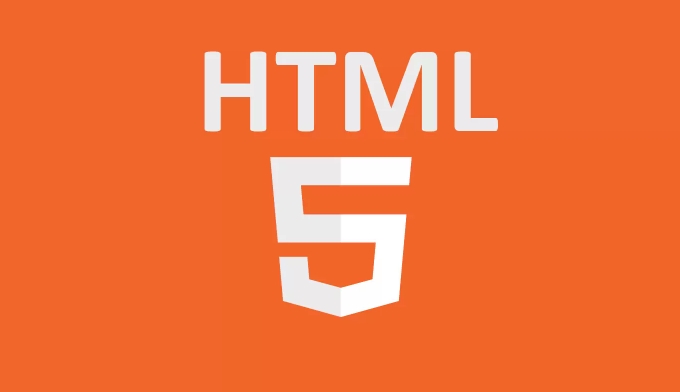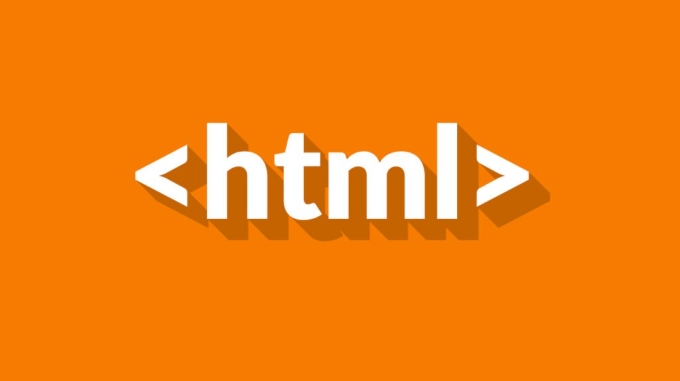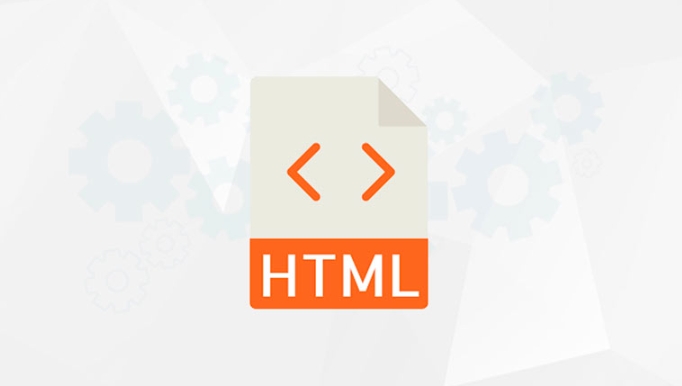The <meter> element is used to represent a scalar measurement within a known range, not for progress over time. 1. Use <meter> for values like test scores, disk usage, or poll results. 2. Apply the basic syntax with required value, and optional min, max, low, high, and optimum attributes. 3. Provide visual feedback using low, high, and optimum to influence color rendering. 4. Ensure accessibility by pairing with a label, including visible text inside the tag, and using the title attribute. 5. Style with CSS pseudo-elements for WebKit browsers and accent-color in Firefox, or use custom styling for consistency. 6. Avoid common mistakes such as using <meter> for loading indicators, omitting min/max, skipping fallback text, or assuming uniform colors across browsers. The <meter> element is the correct semantic choice for showing a static value within a defined range when used properly.

The <meter></meter> element in HTML is used to represent a scalar measurement within a known range — like disk usage, quiz scores, or progress toward a goal. It's not for showing progress over time (that's what <progress></progress> is for), but rather a static "this is where you are" kind of value.
 element?" />
element?" />Here’s how to use it properly:
? When to Use <meter></meter>
Use <meter></meter> when you need to display a numeric value within a defined range, such as:
 element?" />
element?" />- Test scores (e.g., 85 out of 100)
- Disk usage (e.g., 60% used)
- Poll results
- Product ratings
It should not be used to indicate loading or background tasks — use <progress></progress> for that.
?? Basic Syntax
<meter value="75" min="0" max="100">75%</meter>
value: The current value (required).min: The minimum possible value (default is 0).max: The maximum possible value (default is 1).
You can also add optional attributes:
 element?" />
element?" />low: Defines the threshold below which values are considered low.high: Defines the threshold above which values are considered high.optimum: Indicates the ideal value (can be anywhere in the range).
? Visual Feedback with low, high, and optimum
Browsers use these to color the meter visually:
<meter value="80" min="0" max="100" low="30" high="70" optimum="100"> 80% </meter>
In this case:
- Values ≤ 30 → typically shown as red/yellow (poor)
- Values between 30 and 70 → yellow (medium)
- Values ≥ 70 → green (good), especially near 100
Note: The actual colors depend on the browser and aren't standardized. You can customize them with CSS.
? Accessibility Tips
Always provide context for screen readers:
<label for="score">Your test score:</label> <meter id="score" value="85" min="0" max="100" title="85%"> 85 out of 100 </meter>
Including visible text inside the <meter> tag (like 85 out of 100) helps ensure the value is accessible even if styles fail or for assistive tech.
?? Styling with CSS
You can style <meter> using pseudo-elements (browser support varies):
/* Chrome, Edge, Safari */
meter::-webkit-meter-bar {
background: #eee;
}
meter::-webkit-meter-value {
background: green;
}
/* Firefox */
meter {
accent-color: green;
}For consistent cross-browser styling, consider using custom CSS with a wrapper and background gradients.
?? Common Mistakes
- Using
<meter></meter>for progress over time → use<progress></progress>instead. - Omitting
minandmaxwhen the range isn’t 0–1. - Not providing fallback text inside the tag.
- Assuming colors are consistent across browsers.
Basically, <meter></meter> is great for displaying measurable data in a semantic way — just make sure the context is clear and the values are meaningful. It’s not flashy, but it’s the right tool when you need to show "how much" within a known scale.
The above is the detailed content of How to use the element?. For more information, please follow other related articles on the PHP Chinese website!

Hot AI Tools

Undress AI Tool
Undress images for free

Undresser.AI Undress
AI-powered app for creating realistic nude photos

AI Clothes Remover
Online AI tool for removing clothes from photos.

Clothoff.io
AI clothes remover

Video Face Swap
Swap faces in any video effortlessly with our completely free AI face swap tool!

Hot Article

Hot Tools

Notepad++7.3.1
Easy-to-use and free code editor

SublimeText3 Chinese version
Chinese version, very easy to use

Zend Studio 13.0.1
Powerful PHP integrated development environment

Dreamweaver CS6
Visual web development tools

SublimeText3 Mac version
God-level code editing software (SublimeText3)
 The `` vs. `` in HTML
Jul 19, 2025 am 12:41 AM
The `` vs. `` in HTML
Jul 19, 2025 am 12:41 AM
It is a block-level element, used to divide large block content areas; it is an inline element, suitable for wrapping small segments of text or content fragments. The specific differences are as follows: 1. Exclusively occupy a row, width and height, inner and outer margins can be set, which are often used in layout structures such as headers, sidebars, etc.; 2. Do not wrap lines, only occupy the content width, and are used for local style control such as discoloration, bolding, etc.; 3. In terms of usage scenarios, it is suitable for the layout and structure organization of the overall area, and is used for small-scale style adjustments that do not affect the overall layout; 4. When nesting, it can contain any elements, and block-level elements should not be nested inside.
 Essential HTML Tags for Beginners
Jul 27, 2025 am 03:45 AM
Essential HTML Tags for Beginners
Jul 27, 2025 am 03:45 AM
To get started with HTML quickly, you only need to master a few basic tags to build a web skeleton. 1. The page structure is essential, and, which is the root element, contains meta information, and is the content display area. 2. Use the title. The higher the level, the smaller the number. Use tags to segment the text to avoid skipping the level. 3. The link uses tags and matches the href attributes, and the image uses tags and contains src and alt attributes. 4. The list is divided into unordered lists and ordered lists. Each entry is represented and must be nested in the list. 5. Beginners don’t have to force memorize all tags. It is more efficient to write and check them while you are writing. Master the structure, text, links, pictures and lists to create basic web pages.
 Shadow DOM Concepts and HTML Integration
Jul 24, 2025 am 01:39 AM
Shadow DOM Concepts and HTML Integration
Jul 24, 2025 am 01:39 AM
ShadowDOM is a technology used in web component technology to create isolated DOM subtrees. 1. It allows the mount of an independent DOM structure on ordinary HTML elements, with its own styles and behaviors, and does not affect the main document; 2. Created through JavaScript, such as using the attachShadow method and setting the mode to open; 3. When used in combination with HTML, it has three major features: clear structure, style isolation and content projection (slot); 4. Notes include complex debugging, style scope control, performance overhead and framework compatibility issues. In short, ShadowDOM provides native encapsulation capabilities for building reusable and non-polluting UI components.
 HTML `style` Tag: Inline vs. Internal CSS
Jul 26, 2025 am 07:23 AM
HTML `style` Tag: Inline vs. Internal CSS
Jul 26, 2025 am 07:23 AM
The style placement method needs to be selected according to the scene. 1. Inline is suitable for temporary modification of single elements or dynamic JS control, such as the button color changes with operation; 2. Internal CSS is suitable for projects with few pages and simple structure, which is convenient for centralized management of styles, such as basic style settings of login pages; 3. Priority is given to reuse, maintenance and performance, and it is better to split external link CSS files for large projects.
 Why is my image not showing up in HTML?
Jul 28, 2025 am 02:08 AM
Why is my image not showing up in HTML?
Jul 28, 2025 am 02:08 AM
Image not displayed is usually caused by a wrong file path, incorrect file name or extension, HTML syntax issues, or browser cache. 1. Make sure that the src path is consistent with the actual location of the file and use the correct relative path; 2. Check whether the file name case and extension match exactly, and verify whether the image can be loaded by directly entering the URL; 3. Check whether the img tag syntax is correct, ensure that there are no redundant characters and the alt attribute value is appropriate; 4. Try to force refresh the page, clear the cache, or use incognito mode to eliminate cache interference. Troubleshooting in this order can solve most HTML image display problems.
 Can you put a tag inside another tag?
Jul 27, 2025 am 04:15 AM
Can you put a tag inside another tag?
Jul 27, 2025 am 04:15 AM
?Youcannotnesttagsinsideanothertagbecauseit’sinvalidHTML;browsersautomaticallyclosethefirstbeforeopeningthenext,resultinginseparateparagraphs.?Instead,useinlineelementslike,,orforstylingwithinaparagraph,orblockcontainerslikeortogroupmultipleparagraph
 HTML `link` for Prefetching DNS
Jul 23, 2025 am 02:19 AM
HTML `link` for Prefetching DNS
Jul 23, 2025 am 02:19 AM
Pre-resolving DNS can speed up page loading speed, and using HTML link tags for DNS pre-resolving is an effective method; DNSPrefetching saves subsequent request time by resolving domain names in advance; applicable scenarios include third-party fonts, advertising statistics scripts, resource hosting and CDN domain names; it is recommended to prioritize the main page dependency resources, reasonably control the number between 3 and 5, and use it with preconnect to better effect.
 What is the name attribute in an input tag for?
Jul 27, 2025 am 04:14 AM
What is the name attribute in an input tag for?
Jul 27, 2025 am 04:14 AM
Thenameattributeinaninputtagisusedtoidentifytheinputwhentheformissubmitted;itservesasthekeyinthekey-valuepairsenttotheserver,wheretheuser'sinputisthevalue.1.Whenaformissubmitted,thenameattributebecomesthekeyandtheinputvaluebecomesthevalueinthedatasen






